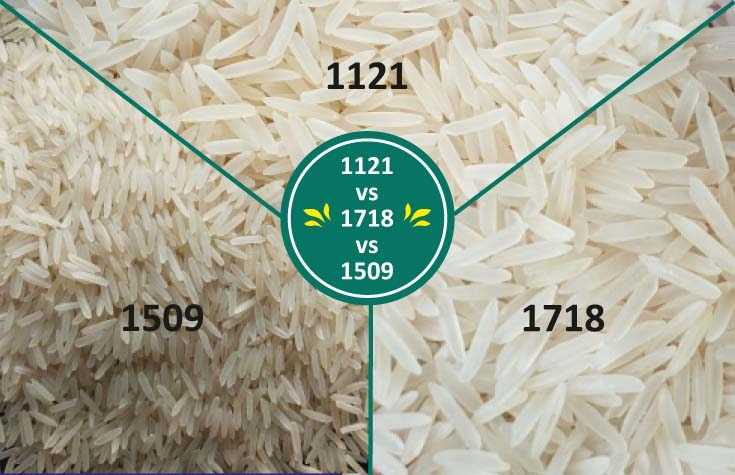Soybean meal, a staple in modern agriculture and livestock feed, plays a crucial role in providing essential nutrients and supporting sustainable farming practices worldwide. This blog post delves into the production process, nutritional benefits, diverse applications, and environmental impact of soybean meal. Additionally, we’ll cover the basics of soybean trading on the Chicago Board of Trade (CBOT) and provide a detailed FAQ section.
What is Soybean Meal?
Soybean meal is the residue left after extracting oil from soybeans. This versatile byproduct is known for its high protein content and balanced nutritional profile, making it an invaluable ingredient in animal feed and organic fertilizers.
Nutritional Composition
Soybean meal is prized for its nutrient-rich composition:
- Protein: Contains approximately 44-50% protein, essential for animal growth, muscle development, and overall health. This high protein content makes it one of the most important components in animal feed, ensuring that livestock receive the necessary nutrients for optimal growth and productivity.
- Amino Acids: Rich in essential amino acids like lysine and methionine, crucial for protein synthesis and metabolism. These amino acids are vital for maintaining muscle mass and overall health in animals, supporting functions such as enzyme production and immune response.
- Fiber: Provides dietary fiber, promoting digestive health in livestock. Fiber aids in maintaining a healthy gut flora and preventing digestive disorders, which is critical for the well-being and productivity of animals.
Production Process
The production of soybean meal involves several key steps:
- Harvesting: Soybeans are harvested from fields and transported to processing facilities.
- Cleaning and Dehulling: The harvested soybeans are cleaned to remove impurities and then dehulled to separate the outer shell from the soybean.
- Extraction: The cleaned soybeans are crushed to extract oil. This process can be done using mechanical pressing or solvent extraction methods. The remaining solid material is the soybean meal.
- Heat Treatment: The soybean meal undergoes heat treatment to deactivate enzymes and ensure nutritional stability. This step is crucial to enhance the digestibility and safety of the meal for animal consumption.
- Grinding: The treated soybean meal is ground into a fine powder to make it suitable for inclusion in animal feed.
Applications of Soybean Meal
Soybean meal finds extensive use in various sectors due to its nutritional richness and versatility.
Animal Feed
- Livestock: Soybean meal is a primary source of protein for cattle, pigs, and other livestock. It enhances growth rates, supports reproductive health, and improves overall animal performance. The amino acids in soybean meal are essential for muscle development and milk production.
- Poultry: In the poultry industry, soybean meal is used to improve egg production and meat quality. The high protein content supports the rapid growth of broilers and the consistent egg-laying of hens.
- Aquaculture: Soybean meal is an essential component in fish and shrimp diets. It provides the necessary nutrients for the healthy growth of aquatic animals, promoting better yields in fish farming.
Organic Fertilizer
- Soil Fertility: Soybean meal is used as an organic fertilizer to enhance soil fertility and structure. It provides essential nutrients to plants, leading to better crop yields. The nitrogen content in soybean meal helps in replenishing soil nutrients, reducing the need for synthetic fertilizers.
Environmental Impact
Soybean meal offers significant environmental benefits:
- Sustainable Agriculture: By utilizing soybean meal as an organic fertilizer, farmers can reduce their dependence on synthetic fertilizers, which can have harmful environmental effects. This practice promotes sustainable farming by improving soil health and reducing chemical runoff into water bodies.
- Efficient Resource Use: The production of soybean meal maximizes the use of soybeans by utilizing both the oil and meal components. This efficient resource use minimizes waste and enhances the overall sustainability of soybean cultivation.
- Reduced Carbon Footprint: The use of soybean meal in sustainable farming practices supports carbon sequestration in soil. This process helps in capturing and storing carbon dioxide from the atmosphere, mitigating the impact of greenhouse gases and combating climate change.
Choosing Quality Soybean Meal
When selecting soybean meal for agricultural or livestock use, consider the following factors to ensure you are getting a high-quality product:
- Quality Assurance: Opt for products from reputable suppliers that adhere to strict quality standards. Look for certifications and quality control measures that guarantee the safety and nutritional value of the soybean meal.
- Nutritional Integrity: Ensure the meal retains its nutritional value through proper processing and storage. Check for freshness, absence of contaminants, and appropriate packaging to maintain its quality over time.
- Sustainability: Support suppliers committed to sustainable farming practices and environmental stewardship. Choose products that are produced with minimal environmental impact and contribute to the long-term health of agricultural ecosystems.
Soybean Trading on CBOT
The Chicago Board of Trade (CBOT) is a major platform for trading soybean futures. Understanding the dynamics of soybean trading can help farmers and investors make informed decisions.
Key Facts about Soybean Trading on CBOT:
- Futures Contracts: Standardized agreements to buy or sell soybeans at a future date. These contracts help farmers and traders hedge against price volatility and secure stable prices for their produce.
- Market Participants: Includes farmers, processors, speculators, and investors. Each participant plays a role in determining market prices and ensuring the smooth functioning of the soybean market.
- Price Influences: Factors such as weather conditions, global demand, geopolitical events, and changes in agricultural policies impact soybean prices. Keeping track of these factors can help in making strategic trading decisions.
Frequently Asked Questions (FAQs)
Soybean Meal
1. How much protein is in soybean meal? Soybean meal contains approximately 44-50% protein, making it an excellent source of protein for animal feed.
2. Is soybean meal good for health? Yes, soybean meal is rich in protein and essential amino acids, making it beneficial for animal health and growth. It supports muscle development, immune function, and overall well-being.
3. How to cook soybean meal? Soybean meal is typically not cooked for direct human consumption but is processed into animal feed and organic fertilizers. For human consumption, soybeans can be cooked in various ways, including boiling, roasting, and making products like tofu and soy milk.
4. Which animals is soybean meal good to feed to? Soybean meal is suitable for livestock, poultry, and aquaculture. It provides essential nutrients that support growth, reproduction, and overall health in these animals.
5. Does soybean meal increase estrogen? Soybean meal contains isoflavones, which are plant-based compounds that can mimic estrogen. However, their impact varies and is generally not harmful at typical consumption levels. Research indicates that the isoflavone content in soybean meal is safe for both animals and humans when consumed in normal amounts.
6. How many calories are in soybean meal? Soybean meal contains approximately 2,500 calories per kilogram. This high caloric content is beneficial for providing energy to livestock.
7. Is soybean meal good for the thyroid? Soybean meal contains goitrogens that can interfere with thyroid function, but this is typically not a concern in balanced diets. Properly processed soybean meal is safe for consumption and does not pose a significant risk to thyroid health.
8. Is soybean meal good for weight loss? Soybean meal is high in protein and fiber, which can support weight management in animals. These nutrients help in maintaining satiety and preventing overeating.
9. Is soybean meal vegan? Yes, soybean meal is plant-based and suitable for vegan diets in terms of indirect consumption through animal feed. Soybeans themselves are a popular protein source in vegan diets.
10. Does soybean meal affect uric acid levels? There is no direct evidence linking soybean meal to increased uric acid levels. Soybeans are generally considered safe for consumption by most individuals.
11. What are isoflavones in soybean meal? Isoflavones are phytoestrogens found in soybean meal that have antioxidant properties. They can mimic estrogen in the body but are generally safe at normal dietary levels.
General Soybean Questions
12. Is soybean gluten-free? Yes, soybeans are naturally gluten-free, making them a safe option for individuals with gluten intolerance or celiac disease.
13. What is the calorie content of whole soybeans? Whole soybeans contain about 446 calories per 100 grams. They are a nutrient-dense food providing a significant amount of protein, fat, and carbohydrates.
14. How much protein is in whole soybeans? Whole soybeans contain approximately 36-40% protein. This makes them one of the richest plant-based protein sources available.
15. Are soybeans good for health? Yes, soybeans are rich in protein, fiber, vitamins, and minerals, making them a healthy food choice. They support heart health, bone health, and overall nutrition.
16. How to cook soybeans? Soybeans can be boiled, roasted, or made into products like tofu, tempeh, and soy milk. Cooking methods vary depending on the desired dish and texture.
17. Which animals is it good to feed soybeans to? Soybeans are good for livestock, poultry, and aquaculture. They provide essential nutrients that support growth, reproduction, and overall health.
Conclusion
Soybean meal stands as a cornerstone in modern agriculture, providing essential nutrients for livestock and enhancing soil fertility as an organic fertilizer. Its nutritional richness, coupled with its diverse applications and positive environmental impact, makes it indispensable in sustainable farming systems worldwide.
Whether you’re a farmer, agronomist, or agricultural enthusiast, understanding the benefits of soybean meal underscores its vital role in promoting healthier livestock and more productive soils. Embrace the power of soybean meal to foster sustainable agriculture and ensure the well-being of our agricultural ecosystems.
For further information on soybean meal and its applications, reach out to reputable suppliers or visit agricultural resources that promote sustainable farming practices. Together, we can harness the potential of soybean meal to cultivate a more sustainable future for agriculture and beyond.






